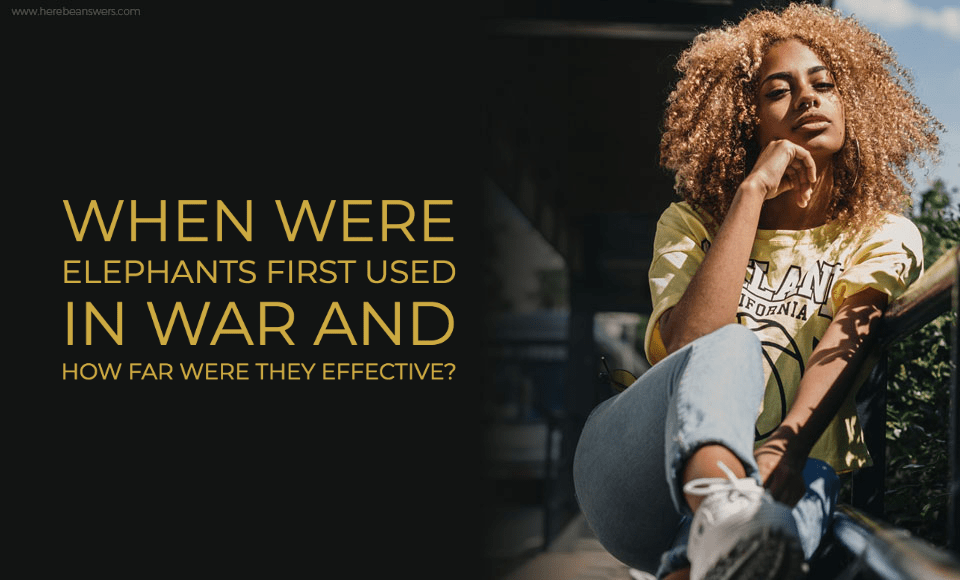Considered as the largest mammals on Earth, elephants have distinct massive bodies, long trunks, and large ears. The largest elephant species weigh up to eight tons. These mammals use trunks to pick up objects, trumpet warnings, greet other elephants, or suck up water for drinking or bathing.
With their massive body structure, they made their mark in ancient warfare as creatures capable of devastating packed formations of enemy troops. Elephants could trample the enemy’s soldiers, throw and even slaughter them with their trunks. They were often armored against enemy weapons or had their tusks tipped with iron spikes.
The early roles of Elephants
Way back, 4,000 years in India, humans used elephants for agricultural purposes such that they could literally uproot trees off the ground to clear areas of farming and construction. However, people have seen their potential as being trainable animals, with great strength, and body form, thus making their way to be at the military use. This transition took place around 1100 B.C., according to Sanskrit sources (click here for more details)
There were assumptions that domesticated elephants were conscripted for military use; however, there were questions since these mammals were rarely bred in captivity. The majority of the war elephants were captured and trained. Male species that are inherently aggressive were preferred more to be used in combat because females usually retreat during the battles.
By nature, elephants are intelligent and easily trained. Yet, despite these qualities, they are still wild at heart, which causes problems during combat. There were several occasions that an elephant panicked and trampled friendly soldiers during battles.
Despite these issues, the ancient Indians continued to believe in their ability even when the ground results showed otherwise. One main reason was the concept of military prowess associated with possessing and employing these massive beasts. Regardless of regions, dynasties, or periods, the elephants were valued in the ancient Indian army until the medieval period. Since the species Elephas maximus indicus were readily available, taming and training were just easy for the people to prepare them for the war and make them fit for military functions.
There were many treatises on capturing, training, and up-keeping of elephants, and essential works of the ancient period like the Arthashastra of Kautilya (4th century BCE), gave lots of information on those subjects. Also, in the Buddhist Nikaya texts, there was mention of the royal elephants’ necessity to be trained to tolerate blows from all kinds of weapons, protect their royal rider, go wherever commanded to, and destroy enemy elephants, infantry, chariots, and horses. The elephant should use its body, trunk, tusks, legs, head, ears, and even its tail during the battle.
In ancient India, the army has consisted of fourfold (chaturanga): Infantry, cavalry, chariots, and elephants. Despite the absence of chariots, the three arms continued to be valued, thus giving a prime place to the elephants.
There were elephant corps headed by a superintendent or a commander on each kingdom. The Mauryan Empire had a 30-member war office of six boards, and the sixth board was headed by the gajadhyaksha, who looked after the elephants. (click here for more details)
Strategies Used in War Elephants
The exceptional ability of elephants that could get rid of many enemy’s soldiers, scare away horses, and trample chariots, had a psychological impact on the enemies. Thus, if a ruler had possessed many of these mammals, it added to his perceived prestige and power and creating a psychological effect on its enemies not to challenge him.
The elephants were even intoxicated as it became more ferocious that increased their capacity to wreak destruction on the enemy troops. A drunk elephant could cause more panic and aggression to break the enemy’s formations, especially in infantry, by trampling them cruelly.
The Chalukyas of Vatapi (present-day Badami, Karnataka state) was noted on the use of the drunken elephants handled by equal or less drunken warriors, which caused the enemies to retreat within the walls of his capital. This strategy of employing both drunken elephants and men in battles was to make attack en masse causing everything to be trampled down without much thought. Historian John said that because of “his champions, and their punch-drunk elephants” made the Chalukya king treat his neighbors with contempt.
The Buddhist texts also mentioned that some royals like the Kuru king, the elephants have preferred command vehicles on the battlefield. Therefore the kings and the princesses needed proper training to the use of the animal, which became a trend in the 6th and 5th centuries BCE.
